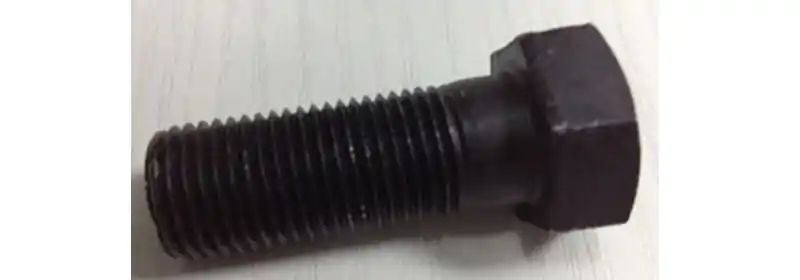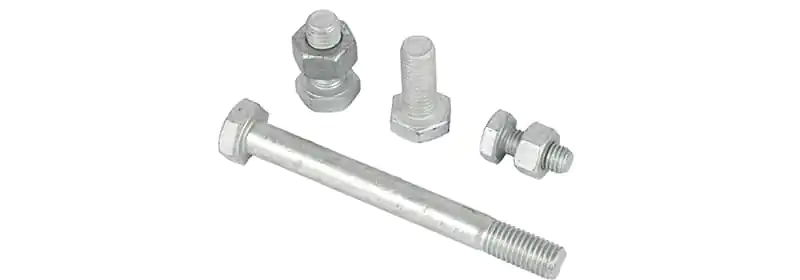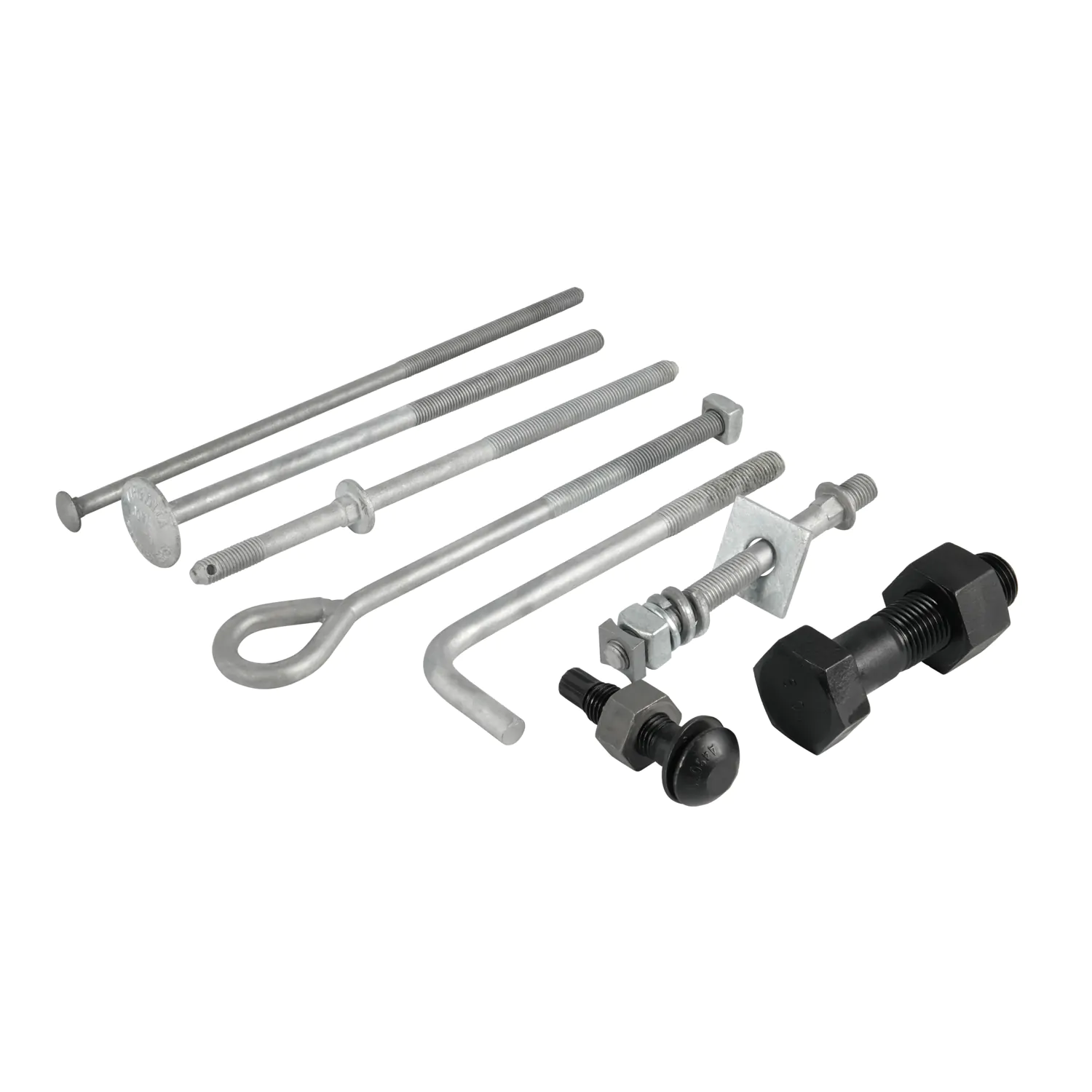Selecting the wrong bolt coating can lead to corrosion, early failure, and costly rework. Whether you’re a procurement professional, technical engineer, or OEM buyer, knowing these 8 essential surface treatments will help you choose the right bolt for harsh environments, compliance needs, and long-term performance.
The 8 most common bolt surface treatments include: Plain, Zinc Plating, Black Oxide, Nickel Plating, Chrome Plating, Hot-Dip Galvanizing (HDG), Dacromet/Magni, and Zinc-Nickel Alloy. Each treatment offers distinct levels of corrosion protection, durability, and compliance with standards like DIN, ISO, or ASTM. Selecting the right one improves lifespan, safety, and cost-efficiency.
1. Plain Finish (No Coating)
Plain finish bolts have no protective layer. They’re low-cost and typically used in indoor, dry, or temporary settings where corrosion is not a concern. Common applications include factory equipment, test assemblies, or enclosed systems.
However, these bolts offer minimal corrosion protection. They’re unsuitable for humid, marine, or outdoor conditions, and are not compliant with any rust-resistance standard. Selection must consider the exposure risk and overall service life requirements.
2. Zinc Plating (Electroplated)
Zinc plating is widely used due to its affordable cost and moderate corrosion resistance. A thin zinc layer is electroplated onto steel bolts, providing a corrosion buffer for indoor or light-duty outdoor environments.
It’s compliant with ISO 4042 and ASTM B633, and common in automotive interiors, HVAC, and electrical panels. However, the salt spray resistance is limited, usually not exceeding 96 hours, making it unsuitable for long-term exposure.

3. Black Oxide Coating
Black oxide is a chemical treatment that darkens the bolt surface, offering a sleek appearance and minimal dimensional change. When combined with oil, it provides limited protection against oxidation.
This coating is typically used in indoor applications like hand tools, fasteners in enclosures, or where tight tolerances matter. It is not recommended for humid or corrosive environments unless used with supplemental rust inhibitors.

4. Nickel Plating
Nickel plating creates a smooth, corrosion-resistant surface ideal for bolts used in electronics, instrumentation, and decorative components. It balances durability with aesthetic value.
Its conductivity and wear resistance make it suitable for electrical assemblies, though its corrosion resistance decreases in salty or high-humidity conditions. Compared to zinc, nickel is costlier but provides superior surface finish and stability.
5. Chrome Plating
Chrome-plated bolts are known for their mirror-like finish and excellent hardness. They are commonly used in motorcycles, hydraulic parts, and automotive trim, where both appearance and wear resistance matter.
Although corrosion protection is decent, chrome is not ideal for marine or outdoor use unless layered over other treatments. Also, environmental compliance must be considered due to hexavalent chromium restrictions.
6. Hot-Dip Galvanizing (HDG)
HDG involves coating bolts with molten zinc, producing a thick, durable zinc layer ideal for infrastructure, marine, and outdoor applications. It provides decades of corrosion protection, often exceeding 50 years in mild conditions.
It’s compliant with ASTM A153 and ISO 1461, but due to coating thickness, dimensional fit must be considered. HDG bolts are widely used in wind energy, bridges, towers, and similar civil engineering projects.

7. Dacromet / Magni (Zinc-Flake Coating)
These coatings are non-electrolytic zinc-aluminum systems, ideal for high-strength bolts due to their hydrogen embrittlement-free process. They are silver-grey in color and used in automotive chassis, towers, and power stations.
Dacromet offers up to 1000 hours of salt spray resistance, while Magni—its upgraded variant—offers RoHS compliance and better mechanical stability. Both are widely accepted in OEM and industrial fastener applications.
8. Zinc-Nickel Alloy
Zinc-Nickel is an advanced electroplated finish, typically with 12–15% nickel content. It provides exceptional corrosion resistance, often surpassing 1200 salt spray hours, making it suitable for EV, aerospace, and marine sectors.
It is compatible with locking patches like Nylok, performs well in high-stress environments, and is increasingly specified by global OEMs. Though more expensive, it offers unmatched balance between performance, finish, and durability.
FAQs
Q1: What’s the best coating for coastal areas?
A: HDG, Magni, or Zinc-Nickel. All offer long-term corrosion protection, even in salt-rich environments.
Q2: Is Dacromet still used in 2025?
A: Yes, but many OEMs now prefer Magni due to its RoHS compliance and higher durability.
Conclusion
Bolt surface treatment is not just about corrosion resistance—it’s about project compatibility, safety, and total lifecycle cost. At Hengrui, we help clients select the right finish for their environment, standards, and performance targets.
Whether you’re sourcing for a coastal wind farm, automotive line, or government infrastructure project, choosing the proper bolt coating is a critical decision.
Contact Hengrui Fastener for Custom Fastener
For specialized applications that require custom solutions, Hengrui Fastener offers high-quality, customizable fastener. Whether you need a specific size, material, or finish, Hengrui can provide tailored fasteners to meet your exact requirements. Visit Hengrui Fastener to learn more about our products and services.







